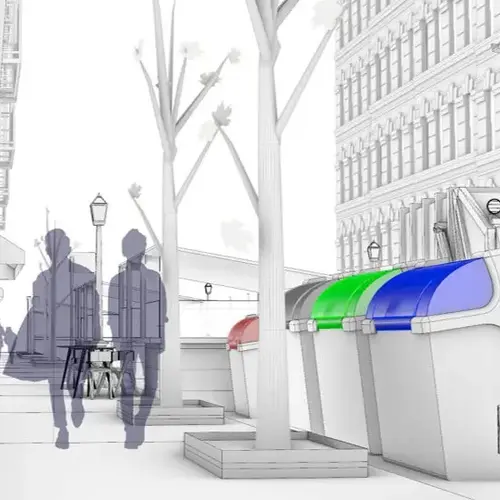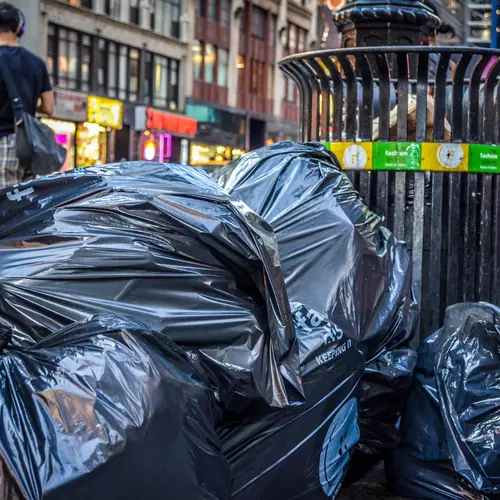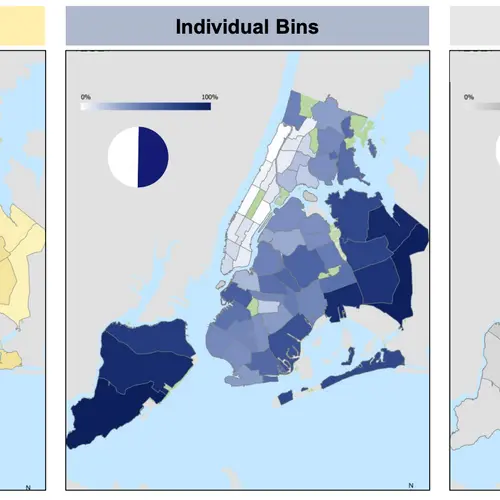NYC’s containerized trash program would eliminate 150,000 parking spaces
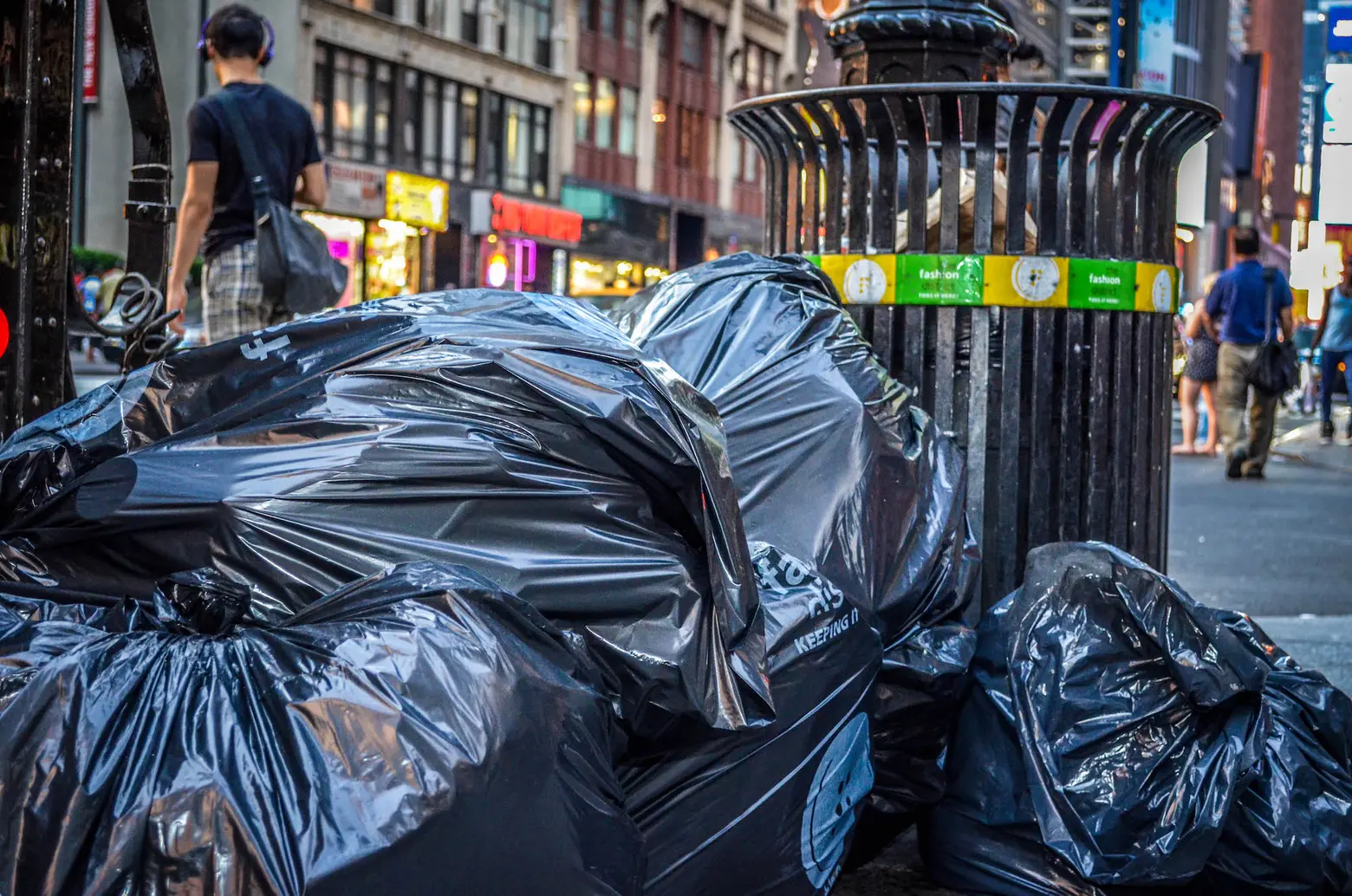
Containerization, storage of trash in sealed bins rather than in plastic bags, is possible on 89 percent of New York City’s streets with residential properties. A new analysis released by the city’s Department of Sanitation this week found installing collection receptacles across the city is actually feasible, but would require the elimination of roughly 150,000 parking spaces, or 10 percent of all curb space on blocks with residential buildings. As first reported by the New York Times, the city will launch a pilot program in West Harlem this fall that will include the installation of trash containers in parking spots on up to 10 blocks and at more than a dozen schools.
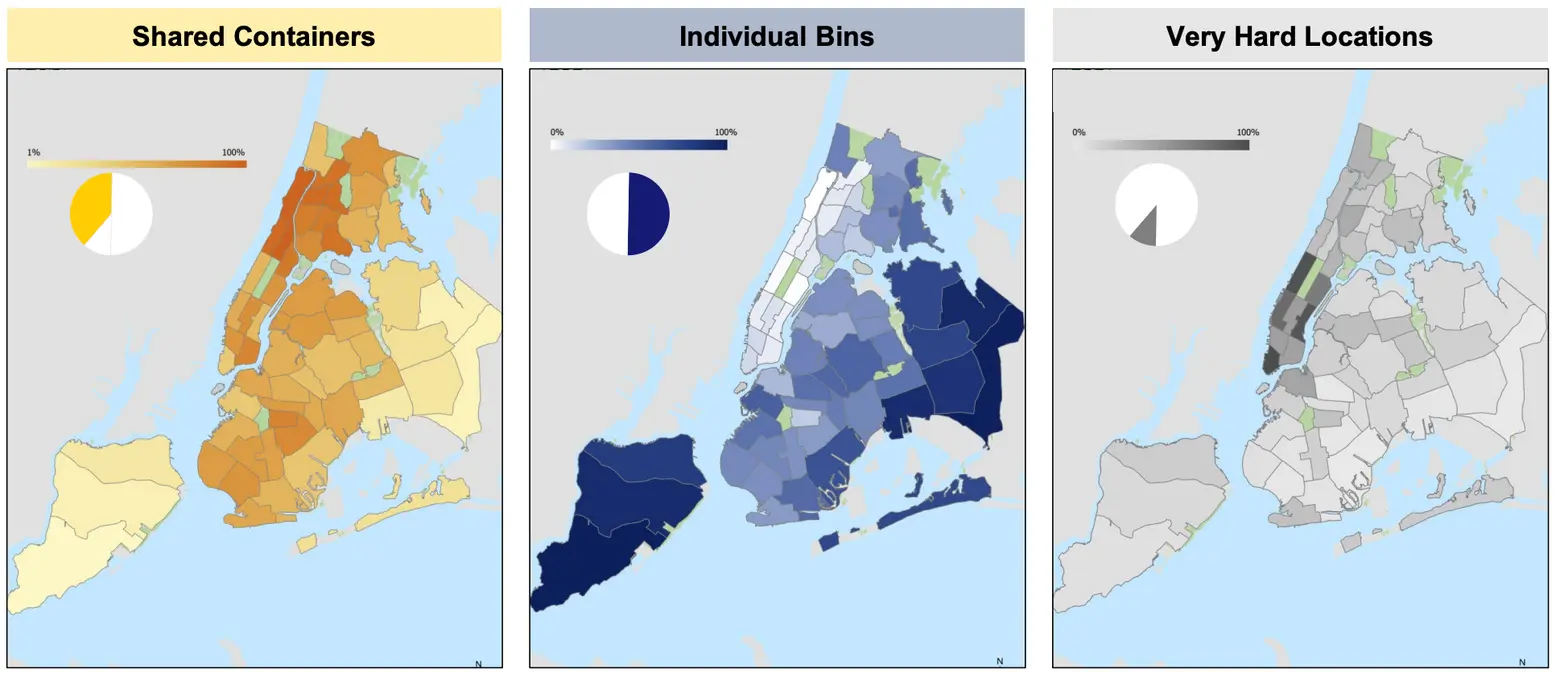
The trash collection program would operate differently across the city depending on the type of residences found on a block. For single-family homes in areas like eastern Queens, southern Brooklyn, and the northern Bronx for example, homes would be required to use individual bins that wouldn’t eliminate any curb space. These individual bins could be used at roughly 50 percent of residences.
An additional 39 percent of streets could use a shared container system, which would see the installation of colorized bins that are within reach of all residential buildings on a block and are best suited for high-density neighborhoods.
However, 11 percent of the city’s densest residential areas, like neighborhoods in Lower Manhattan and Midtown, would not be able to accommodate any sort of container due to a lack of sufficient street space for the amount of trash that is produced.
 Rendering of the shared containers on a city street. Image courtesy of the NYC Department of Sanitation
Rendering of the shared containers on a city street. Image courtesy of the NYC Department of Sanitation
Containerization has been implemented successfully in cities across Europe and Asia, including Amsterdam, Barcelona, and Singapore. While containerization is a common practice among many European cities, no major North American city uses it on a large scale.
The city will test out the shared container system in West Harlem starting by this fall. As part of the DSNY’s $5.7 million pilot program, 10 residential blocks and 14 public schools in the area will see new collection trucks that can lift shared containers along the curb instead of relying on DSNY workers to collect them by hand, according to Streetsblog. The program will also double the collection of trash on these residential blocks from three to six times a week, and at the schools from twice to five times a week.
While the report doesn’t address the exact costs of the containerization program, a system of its magnitude is expected to cost the city hundreds of million dollars over the next decade. As part of the program, the city would have to purchase new side-loading collection trucks and shared containers, and significantly increase the frequency of trash pickups.
The DSNY’s proposal and West Harlem’s pilot program are part of Mayor Eric Adam’s broader effort to help fight NYC’s trash and rodent problem. In April 2022, Adams and DSNY Commissioner Jessica Tisch unveiled the city’s first containerized trash bin that would work to thwart rats, make more room on the sidewalks, and improve the overall quality of life for New Yorkers. The first bins were installed in Times Square.
In October 2022, Adams proposed that the time New Yorkers put out their trash to be picked up by DSNY be pushed back from 4 p.m. to 8 p.m., cutting the amount of time waste sits on the curb and attracts rodents.
Last month, the city announced that it finally found its “rat czar” after first announcing it was looking for an individual to spearhead the city’s campaign against its rat population in December 2022. Kathleen Corradi filled the city’s requirements as someone who had a “swashbuckling attitude, crafty humor, and general badassery,” and most importantly, “a virulent vehemence for vermin.”
RELATED:
